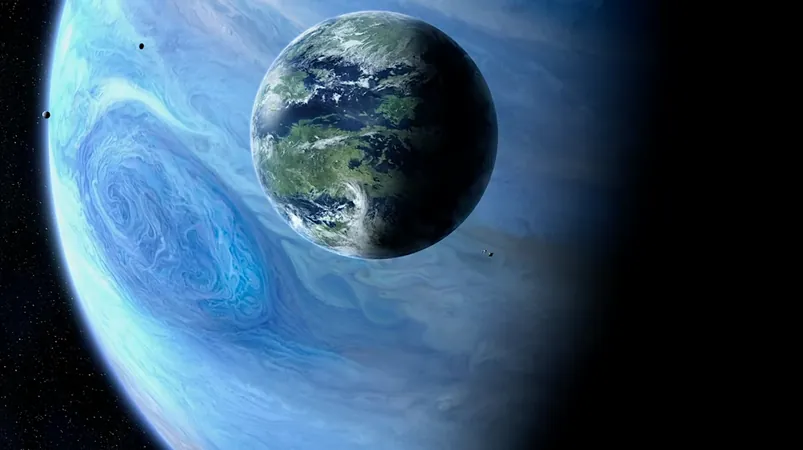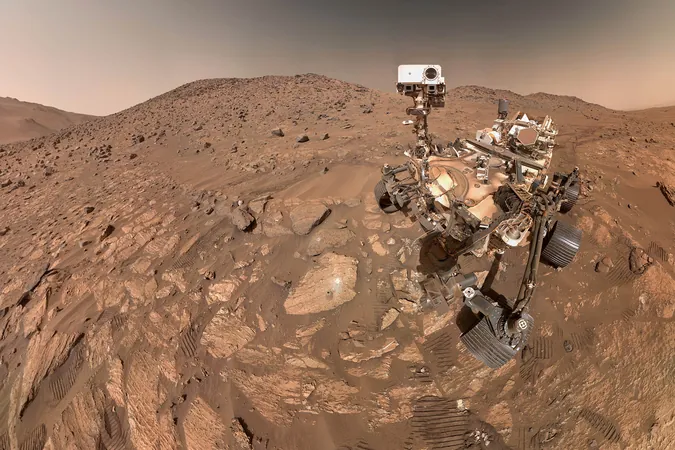
Exploring New Worlds: Can We Detect Moons Around Giant Exoplanets in Alpha Centauri A's Habitable Zone?
2025-09-22
Author: Nur
A Groundbreaking Opportunity Awaits
Imagine the possibilities of discovering exomoons orbiting massive exoplanets right in our cosmic backyard! Scientists are honing in on fascinating prospects surrounding Alpha Centauri A, home to a hypothetical giant planet that could harbor moons capable of supporting life.
Advanced Simulation Techniques
Researchers have developed innovative simulations designed to evaluate how we might detect these elusive exomoons through their gravitational influences on orbiting planets. These simulations focus specifically on Alpha Centauri A, relying on data gathered from advanced telescopes like the Very Large Telescope and the James Webb Space Telescope.
The Search for Exomoons: What Are the Tools?
To embark on this celestial hunt, scientists are considering various observational setups, including a proposed specialized space telescope. This envisioned 3-meter telescope would operate at a central wavelength of 500 nm and boast impressive capabilities, detecting moon-sized celestial bodies with remarkable precision.
Promising Detection Limits
The research indicates that with a five-year observational campaign, a telescope like this could spot moons with a mass similar to Earth's orbiting a Saturn-mass planet. This opens the door to possible discoveries of moons as small as 0.2 Earth masses with orbital periods ranging from 4 to 30 days.
Ground-Based Alternatives
Even a 39-meter ground-based telescope could achieve significant results, identifying Earth-sized exomoons if the observations were performed just once a day. This flexibility highlights the diverse methods available to us as we venture into this exciting scientific frontier.
Moving Forward: The Need for Dedicated Research
These findings advocate for the establishment of a dedicated space observatory to deepen our understanding of potential moon systems around exoplanets. The intriguing dynamics of star-planet-moon relationships could lead to groundbreaking revelations about life beyond Earth.
Illustrative Models Enhance Our Understanding
Visual aids illustrate these concepts, depicting a sizable moon orbiting a Saturn-mass planet. While this large moon is more of a conceptual tool than a likely find, it demonstrates the gravitational effects that could help scientists pinpoint the locations of smaller, Earth-like moons.
Join the Adventure!
As we stand on the cusp of this thrilling exploration, the potential for uncovering new worlds in the Alpha Centauri system beckons. With cutting-edge technology and brilliant minds at work, the search for extraterrestrial moons is more promising than ever.



 Brasil (PT)
Brasil (PT)
 Canada (EN)
Canada (EN)
 Chile (ES)
Chile (ES)
 Česko (CS)
Česko (CS)
 대한민국 (KO)
대한민국 (KO)
 España (ES)
España (ES)
 France (FR)
France (FR)
 Hong Kong (EN)
Hong Kong (EN)
 Italia (IT)
Italia (IT)
 日本 (JA)
日本 (JA)
 Magyarország (HU)
Magyarország (HU)
 Norge (NO)
Norge (NO)
 Polska (PL)
Polska (PL)
 Schweiz (DE)
Schweiz (DE)
 Singapore (EN)
Singapore (EN)
 Sverige (SV)
Sverige (SV)
 Suomi (FI)
Suomi (FI)
 Türkiye (TR)
Türkiye (TR)
 الإمارات العربية المتحدة (AR)
الإمارات العربية المتحدة (AR)